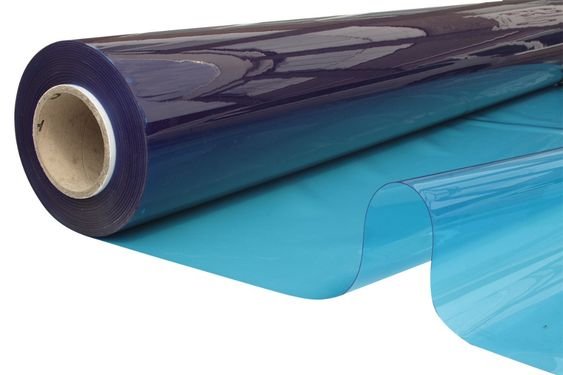Direct to Garment Printing Method: How Does It Work?
In the world of custom apparel, Direct to Garment (DTG) printing has become a revolutionary method for creating high-quality, detailed designs on t-shirts, hoodies, and other fabrics. Unlike traditional printing methods like screen printing, DTG printing allows for full-color designs, photographic-quality images, and one-off productions without the need for complicated setup processes. This makes it an ideal solution for smaller runs, highly detailed artwork, and custom pieces. But how exactly does DTG printing work, and what makes it so appealing for both businesses and consumers?
In this article, we’ll dive into the DTG printing process near me, its benefits, and how it compares to other printing methods.
What Is Direct to Garment Printing?
Direct to Garment (DTG) printing is a process where ink is directly applied to the fabric using specialized inkjet technology. Similar to how an inkjet printer works for paper, the DTG printer sprays the ink directly onto the garment, allowing for precise and detailed designs. The printer employs inks that are water-based, so while you wear the garment, the colors will stay brilliant and the design will remain.
This method is particularly known for its ability to produce full-color designs, intricate details, and photo-realistic images with smooth color gradients. Unlike other printing methods, such as screen printing or vinyl transfer, DTG doesn’t require separate stencils or screens for each color, which makes it perfect for multi-color designs and short print runs.
The DTG Printing Process: Step by Step
The DTG printing process involves several steps, each of which contributes to the final quality and durability of the printed garment. The process is shown here in great detail:
- Preparing the Design
The first step in DTG printing is preparing the design. The artwork is created or adjusted using graphic design software like Adobe Illustrator or Photoshop. Since DTG printing is capable of reproducing high levels of detail, the design is often created in high resolution (usually 300 DPI or higher) to ensure the best print quality. The design is then transferred to a RIP software (Raster Image Processor), which prepares the image for printing and manages the color profiles.
- Pre-Treatment of the Garment
Before the actual printing process can begin, the garment must be pre-treated. Pre-treatment is essential for achieving bright colors and ensuring the ink adheres properly to the fabric. A pre-treatment solution is sprayed onto the garment (typically on cotton fabrics) to create a smooth, even surface that the ink can bond to.
This step is especially important when printing on dark garments because the pre-treatment allows the white underbase layer of ink to stand out, making the colors more vibrant. After pre-treatment, the garment is usually heat-pressed to flatten the fibers and ensure the best possible print quality.
- Printing the Design
Once the garment is pre-treated and ready, it is placed on the DTG printer’s platen, a flat surface that holds the garment in place during printing. The printer then applies the ink directly to the fabric, layer by layer.
For light-colored garments, the printer can print the design directly onto the fabric. However, for dark garments, the printer first lays down a white underbase, which serves as a foundation for the colors that will be printed on top. This ensures that the colors remain bright and true to the design, even on darker fabrics.
- Curing the Ink
After the design is printed, the garment must go through a curing process to set the ink and ensure durability. This is usually done by placing the garment in a heat press or conveyor dryer, which applies heat and pressure to cure the water-based inks into the fabric fibers.
The curing process ensures that the print will remain vibrant and won’t wash out or fade easily, even after multiple washes. Most DTG inks are designed to be wash-resistant, but proper curing is essential to maintain this quality.
Benefits of Direct to Garment Printing
- Full-Color, High-Resolution Prints
One of the biggest advantages of DTG printing is its ability to print full-color designs with high levels of detail. This makes it perfect for artwork that requires complex color gradients, shading, or photographic quality. Unlike screen printing, which uses a different screen for each color, DTG can print multi-color designs in one go, significantly reducing setup time and cost.
- Perfect for Short Runs and Custom Orders
DTG printing is ideal for small batches or one-off custom pieces because it doesn’t require a lengthy setup process. You can print just one garment or hundreds, without worrying about high initial costs. This makes DTG especially popular for small businesses, artists, and brands that want to offer custom t-shirts without needing large orders.
- Environmentally Friendly
As opposed to the harmful plastisol inks used in conventional screen printing, the water-based inks used in direct-to-garment (DTG) printing are better for the environment. These inks are free of harmful chemicals and are safe for the environment. Additionally, since DTG printing doesn’t require large batches, there is less waste in terms of unused products.
- Soft, Breathable Prints
Because the ink is absorbed into the fabric, DTG printing produces a soft, breathable print. Unlike vinyl printing or heat transfers, where the design sits on top of the fabric, DTG prints are part of the garment, resulting in a comfortable and natural feel.
DTG Printing vs. Screen Printing: What’s the Difference?
While both DTG and screen printing are popular methods for custom apparel, they have distinct differences. Screen printing is generally preferred for large bulk orders and simpler designs with fewer colors, as it requires creating individual screens for each color in the design. Screen printing is also cost-effective for large-scale projects.
DTG, on the other hand, shines in smaller batches and more complex designs. It’s more suitable for on-demand printing, where customization and detail are essential.
Conclusion
Direct to Garment (DTG) printing is a powerful and versatile printing method that allows for detailed, vibrant, and durable prints directly onto fabric. With its ability to handle complex designs and short runs, DTG has become a favorite in the custom apparel industry, especially for online stores and businesses that focus on personalization. Its quick setup time, eco-friendly inks, and soft prints make it an ideal choice for anyone looking to create high-quality custom garments. Whether you’re a small business owner or a designer, DTG offers a flexible, reliable, and cost-effective way to bring your ideas to life on fabric.






